Four Springs: A Private Film Accepted by Public Communication

Text | Ruiying
Home is the softest feeling in everyone’s heart. Even if you can only be a swallow who returns home every year, it is also a kind of happiness to go home. In the Mid-Autumn Festival, when the moon is in the middle of the day, perhaps everyone will see the wells in their hometown, the winding rivers in front of the village and the hawking in Gu Xiang, and even think of their parents. Cross mountains and seas, don’t forget to go home! This is the slogan of Four Springs. The director uses the artistic expression of simple family video lens, writes the emotions and philosophy scattered in the fragments of life with a plate-like narrative structure, and transmits the private family memories to the public in a shared mode. This private film broke into public view, which seems to be a coincidence, but it coincides with people’s social psychology of longing for a simple and simple life, and also reflects the increasingly rich and diverse side of the film market.
one
Limited perspective, unlimited feelings.
Private film is a sub-type of documentary, so it is also called "private documentary". There are two kinds of understandings of private movies: the broad sense is the first-person documentary, and the narrow sense is only a part of the first-person documentary, especially those films that aim at the director’s own personal or family and shoot trivial matters, experiences or family stories around him.
Although movies in the narrow sense all focus on self-expression, and usually use diary-style recording, the creators usually go their separate ways in two dimensions in terms of the time and space of recording and the choice of themes: some people choose family daily life, while others choose privacy and taboo, which construct two different development threads of private movies. Four Springs is undoubtedly the former. However, most private films in China were the latter. Therefore, this film is clearly distinguished from most private films in China, focusing on how parents discover the beauty of everyday life.
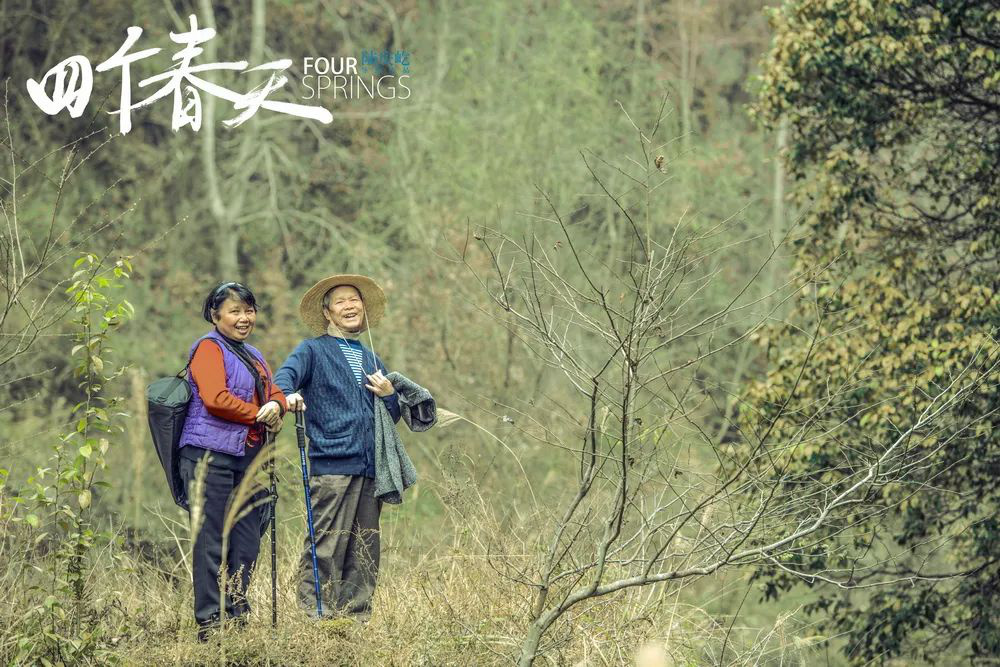
The shooting technique of "Four Springs" is documentary, which restores the real state of life to a certain extent, but it is also expressionist, which highly condenses life. The intimate relationship between parents as the subject of shooting and the director at first provided a relatively relaxed environment for the birth of the film. The director himself has a high understanding of the environment and the subject, so that kind of emotion has overwhelming power for the audience.
The audience always observes the family under the guidance of the director. The picture and voice showed the director’s presence several times. When my father called his sister, he said, "Qingyidong took a picture of the west, and I’ll call you when I’m filming." Moreover, the mother sent her grandchildren out, looked at them with reluctance, and then said to the director who was filming, "Take them." The director present is neither a complete bystander nor a deep participant, but seeks a balance between watching and participating, and the core of this balance is the pursuit of documentary style and aesthetic interest of the film. Arouse the audience’s curiosity and desire to watch when recording the plain and poetic life.
As a first-person documentary, the director exposes his privacy to the public while telling the story. From making sausages, cutting hair and learning musical instruments to the heavy plot of my sister’s illness and funeral, it shows the reality in poetic life. Compared with the drama of his own plot, this did not hinder his self-presentation, nor did it reduce his image charm and attraction at all. Instead, the audience found the amazing power and faint poetry of "everyday" in these simple private images.
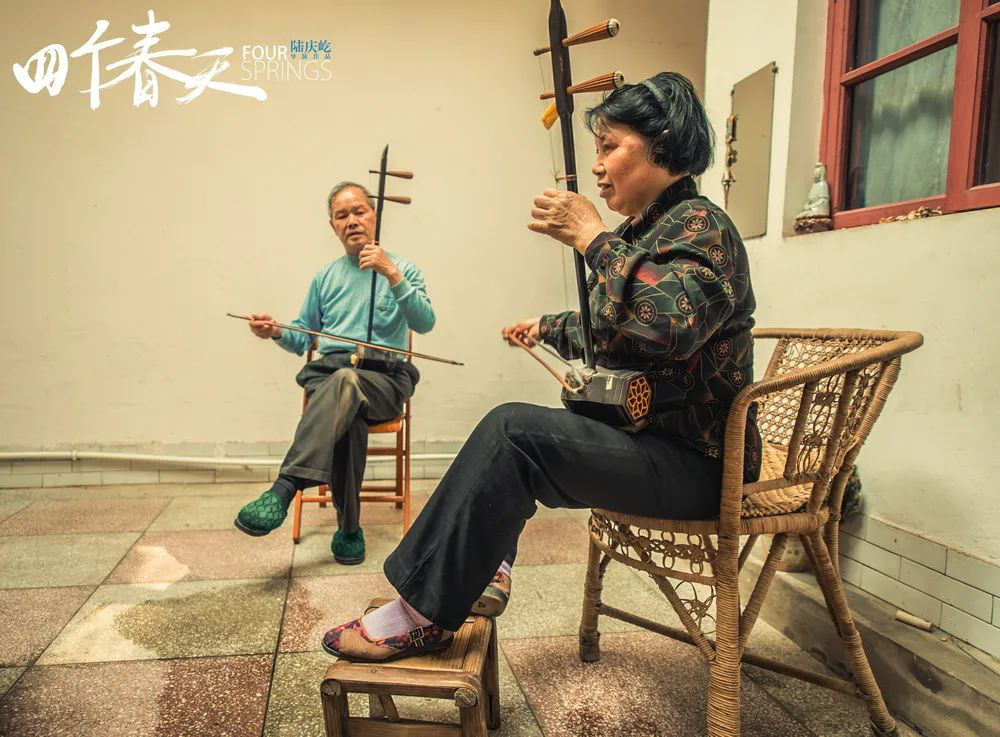
two
Flowers in pain
The lens language in the film is very simple, but it is different from the family visual diary in the normal sense. Although Lu Qingyi is not a professional director himself, she has an aura of professional perspective in lens design and choice. We can see the director’s design from the aspects of film composition, lighting and lens movement. Although the sound of the film and the frame rate selection of the lens are still far from the standard, this does not hinder the brilliance of the film as a standard cinema film.
In the film, every Spring Festival children come back from other places, and their parents have to go through a long corridor to open the door. At this time, the lens is always a deep lens, and the parents’ expectations and family reunion scenes add a sense of history and crossing under this lens design. Father is singing in the room, and mother is stepping on the sewing machine in the next room. A depth-of-field lens puts both parents in the picture and separates the picture with a door frame, resulting in an effect similar to a parallel montage. In the use of empty lens, the transparent texture of red curtains coming in through sunlight, the wetness of rain and the addition of rare snow images in the south make the film more poetic. In the picking and selection of the lens, it fully shows the director’s artistic accumulation and attainments.
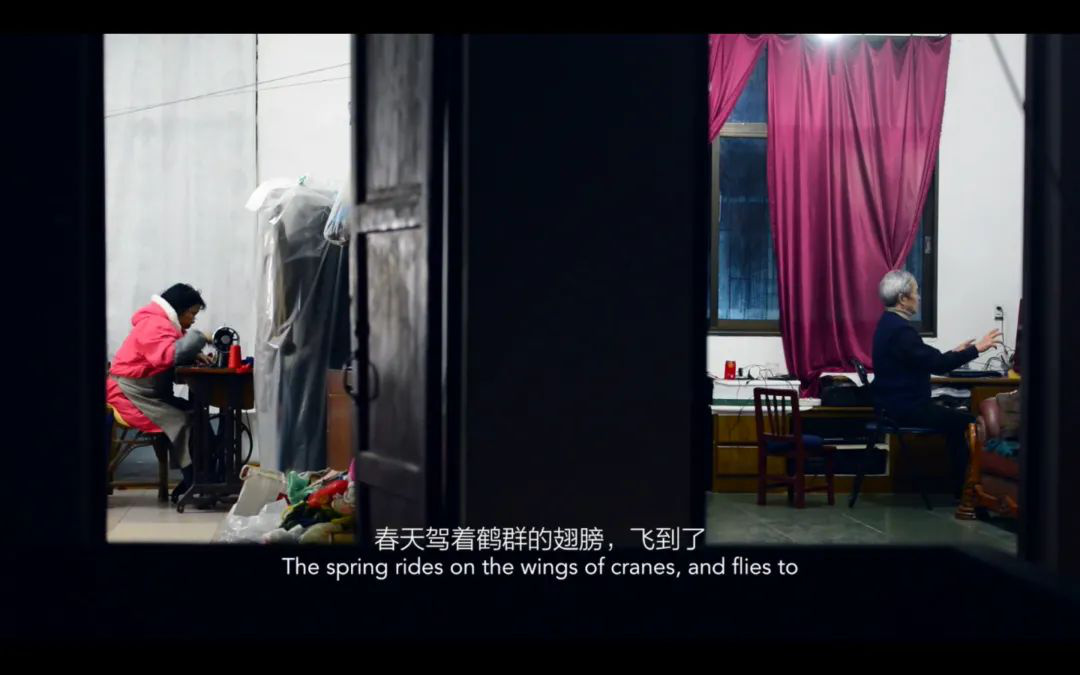
If there is only "poetry and distance", it will always be a beautiful imagination. No one’s life is smooth sailing, and there are also wounds in Four Springs. The director takes the illness and death of his sister as the plot point of the story from joy to sadness, which is also the main narrative content of the film. The director mentioned in the interview that it was very difficult for him to sort out this plot. As the subject of the story. In the face of the death of a loved one, his heart was full of sorrow, but as a creator, his performance was extremely restrained. However, it has accumulated a strong emotional foundation for emotional narration, and sought a suitable explosion point-the problem of elder sister’s image before her death.
In the first spring, there was not much ink on my sister, so the emotional tone presented when my sister passed away was sudden and heavy. After my sister was buried, the picture immediately turned to the look back of my sister and father standing under the flagpole. The image of my sister, who is smart and cheerful and likes to dance, immediately stood out, in sharp contrast to the lifelessness of the funeral, which made people sigh endlessly about the energetic life in the past. The previously suppressed and forbearing emotion is also in generate at this moment, which makes people sigh. The extreme grief is not the outbreak and resistance of exhaustion of hysteria, but only memories and sighs in the face of beautiful passing.
In the third spring, my sister’s death extends to the past and present as the core of the story. The film is constantly interspersed with memories of the family gathering for the Spring Festival in 1997 and the presentation of my sister’s son, which gradually supplements my sister’s life course. Another year when smoking sausages, my father took out the fallen dust flute and played again. The crops in front of my sister’s grave had grown luxuriantly. Lu mother remembered that they had not sung and danced well for a long time. In the drizzle, they sang familiar songs again in Shan Ye, singing the melodious life. The film shows the audience the beauty of daily life and philosophy of life, depicts the pain in the bones, and also depicts the flowers blooming in the pain. It is not only the parents’ deep love for their daughters, but also the parents’ love for life after suffering and thinking about death.
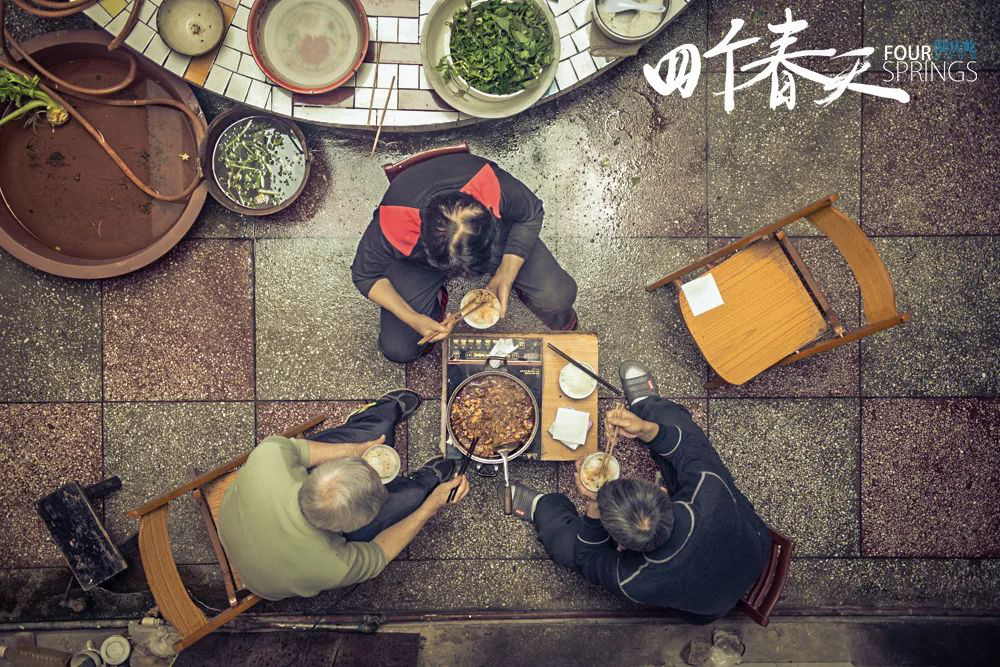
Four Springs is a private film that transcends family trauma and has a strong commonality. When it comes to the presentation of some family trauma and privacy, the director does not shy away, but he is forbearing and restrained. The narrative structure of the film is plate-like, and each plate is interdependent and independent.
The film uses narratology theory to integrate the records of real life and achieve a seemingly casual life flow, which is actually a conscious choice effect. Narrative logic is not to explain the cause and effect of things clearly, but to serve the emotional narrative of the film, that is, the scenes and pictures that the audience is most easy to understand and empathize with and the director is most willing to present. It doesn’t necessarily depend on the director’s strategic decision. After all, "every family has its own problems". Considering the traditional family culture in China, it is indecent to expose too much. There is a south wall behind the gate and a screen inside the hall. It can be understood that the director chose the part that he is most sincere and willing to remember, cherish and share for everyone.
Private movies bring not only people’s concern about individual life, but also their desire to spy on personal privacy, which may lead to a series of moral, ethical and even legal problems. Therefore, the current private films have avoided these problems through some skills in image processing. In Four Springs, the director’s timing is quite accurate. It not only shows the private lives of parents and families to a certain extent, but also deliberately avoids some uncomfortable pictures for the audience and effectively protects the privacy of family members.
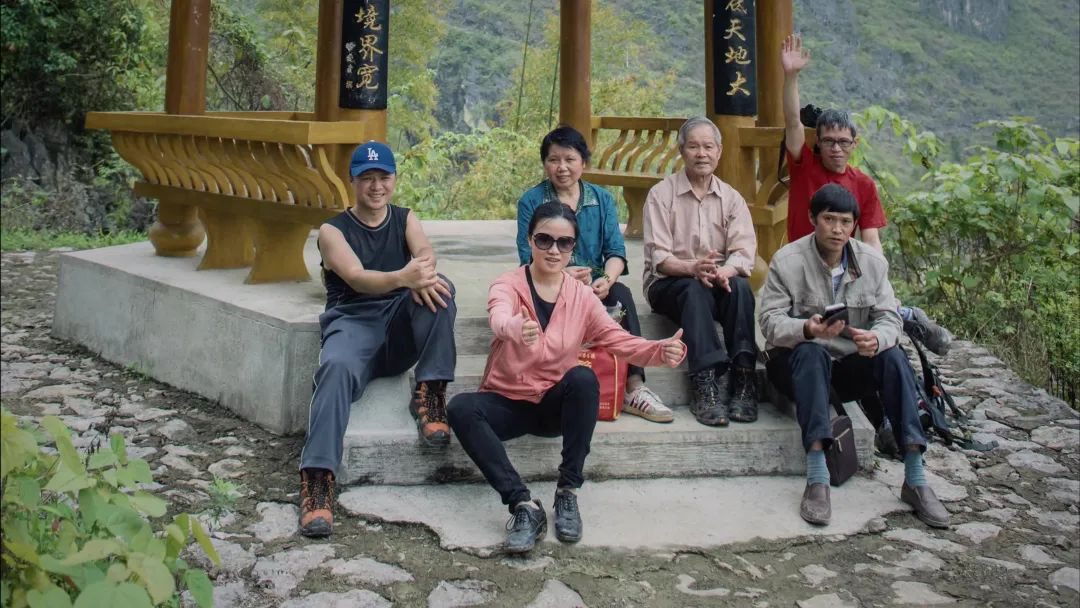
three
Public expression of individual life experience
The director of "Four Springs" recorded the images of his parents’ home through his Nikon camera, and then the combination of these images produced a greater meaning, which is difficult to produce by a simple grand narrative. Grand narrative is not convenient to show the details of the historical process, and often ignores the feelings and stories of small people, but focuses on the first-person images of ordinary people. Under the interaction with specific people and ethnic groups, it becomes the "ethnography" of the group in which it belongs. At this time, the director in Four Springs is not Lu Qingyi himself, but a group of people who have drifted away from home. Lujia parents are not just Lu Yunkun and Li Guixian, but countless people who have stayed in small towns.
From this point of view, the content carried by the film is of universal significance, which has attracted more attention and comments. A private video shows Chinese’s common emotional story, which resonates between the creator and the viewer, and it is also a positive exploration for private films to enter the public domain.
"Four Springs" also tells us that poetry and emotion often come from moments, from the earth, the sun, the moon and the mountains and rivers. The film is a beautiful landscape picture scroll, a meaningful pastoral poem and a lyrical prose by the director. Every shot of his is trying to capture the beauty of daily life, just like the title and shooting season, it is full of spring everywhere. In front of the village, there is a pool of spring water, winding and orderly terraces and swaying windows. Newly opened flowers, returning swallows, a rain, a gust of wind, a touch of the moon, a song, poetic images everywhere.
◐
